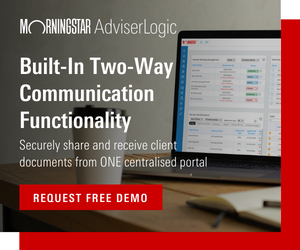This document provides important detail for “Phase 3” of the Morningstar Medalist Rating rollout. Please refer to the updates on “Phases 1 and 2”.
The Morningstar Medalist Rating is underpinned by the three pillars — People, Process, and Parent. Morningstar’s global analyst team believes these three pillars are crucial to predicting the future gross performance of strategies and their associated vehicles.
In accordance with the Morningstar Medalist Rating Methodology, Morningstar assigns pillar ratings to vehicles in one of three ways: “Directly, by Analysts”; “Indirectly, by Analysts”; or “Directly, by Algorithm.”
The Morningstar Medalist Rating is accompanied by two newly implemented data points: Data Coverage % and Analyst-Driven %. The Data Coverage % data point is a summary metric describing the level of data completeness used to generate the overall rating. The Analyst-Driven % data point displays the weighted percentage of a vehicle’s pillar ratings assigned.
Morningstar Medalist Ratings in Australia have been released in a phased manner in the third and fourth quarters in 2023 (based on calendar year).
In Phase 3, commencing on the 1st of November 2023, vehicles expected to receive a Morningstar Medalist Rating should meet the following criteria:
- All three pillar ratings will be either directly or indirectly assigned by an analyst; or
- If an analyst assessment is absent on any Pillar the machine-learning model will assign the Pillar Rating. A Medalist Rating will be produced when 80% or greater Data Coverage exists at the fund level.
Example 1: All three pillar ratings directly or indirectly assigned by an analyst
The following example is illustrative. It uses the Perpetual Diversified Real Return strategy and associated vehicle to demonstrate how inheritance of analyst pillar ratings operate in practice. The Perpetual Diversified Real Return strategy is analyst- covered. The Perpetual Diversified Real Return Funds listed below will inherit all three pillar ratings (People, Process, and Parent Pillars) assigned by analysts, and as such, the Analyst-Driven % = 100% and Data Coverage % = 100%. This example highlights the power of Morningstar’s inheritance logic whereby a primary fund is reviewed by an analyst and these pillar ratings are cascaded to associated vehicles.
Under the Morningstar Medalist Rating system, the analyst typically focuses on the strategy itself to assign pillar ratings and uses the primary vehicle to undertake fund-level analysis (such as performance attribution), given there could be dozens of associated vehicles attached to a particular strategy. The vehicle level is typically only differentiated by the fee load, which may lead to different Medalist Ratings awarded.
In the case of the Perpetual Diversified Real Return strategy, the People and Parent Pillars awarded by analysts are Above Average and the Process Pillar awarded by the analyst is High (as at 8 September 2023).
The example shows the relationship between a primary vehicle and an associated vehicle using the Perpetual Diversified Real Return strategy (StrategyID STUSA05ULS):
- Vehicle 1 (Primary vehicle): Perpetual Diversified Real Return W (Total Cost Ratio – Prospective = 0.92% per year) − Three pillars directly assigned by the analyst
- Vehicle 2 (Associated vehicle): CFS First Choice – Perpetual W Diversified Real Return (Total Cost Ratio – Prospective = 1.25% per year) − Three pillars indirectly assigned by the analyst
Morningstar’s internal systems need to “map” the pillar ratings assigned by the analyst from the primary vehicle to the associated vehicles (in this case, Vehicle 2). This mapping process is not instantaneous. In fact, there may be a lag of up to a month (or in some cases longer) between an analyst publishing a pillar rating for a strategy and the up-to-date rating appearing across all associated vehicles. As such, for the most up-to-date analyst views, we strongly recommend that investors check the primary vehicle’s pillar ratings.
Example 2: If an analyst assessment is absent on any Pillar the machine-learning model will assign the Pillar Rating. A Medalist Rating will be produced when 80% or greater Data Coverage exists at the fund vehicle level.
The following example is illustrative. It uses the T. Rowe Price Australian Equity strategy to demonstrate how this operates in practice. The T. Rowe Price Australian Equity is not fully analyst-covered but does receive a Medalist Rating. The Parent Pillar is indirectly assigned by an analyst. The Process and People Pillars are assigned by the algorithm given 80% or greater Data Coverage exists at the fund vehicle level.
Superannuation, Pension, and Annuities Universes
For the superannuation, pension, and annuities universes, a Morningstar Medalist Rating can be available only for vehicles that have all three pillar ratings directly or indirectly assigned by an analyst.
Phase 1 Refresh: Retirement of the Flagship Fund Rating
The Morningstar Flagship Fund Medalist Rating was specifically designed to ensure that platform vehicles did not receive a separate rating. Instead, the platform vehicle inherited the rating of the primary vehicle, regardless of the fees and costs associated with the platform vehicle. This is inconsistent to how platform vehicles are treated globally.
As such, recall for Phase 1, the Morningstar Flagship Fund Medalist Rating was retired. All vehicles, primary or associated (whether that is a platform vehicle or associated vehicles with different fee arrangements) now receive a Morningstar Medalist Rating. The impact is that different vehicles nested under a strategy may receive different Morningstar Medalist Ratings depending on the fees and costs at the vehicle level.
For example, a Master Trust’s administrative fees and costs will be considered for the Medalist Rating. This is broadly consistent with how the Australian Prudential Regulatory Authority is approaching its Choice and Superannuation Heatmaps where all Total Fees and Costs (that is, both investment and administration fees) are considered. In other words, all fees and costs charged by a vehicle that reduce an investor’s return should be considered. It is also consistent with how Morningstar rates vehicles globally.
The impact of this change is best demonstrated with another example.
Example 3: Impact of Morningstar Flagship Fund Medalist Rating Retirement The following example is illustrative based on ratings outcomes as at 1 November 2023. It uses the Perpetual Diversified Real Return strategy to demonstrate how the retirement of the Flagship Fund Medalist Rating is expected to operate in practice. The example shows three vehicles that are nested under the Perpetual Diversified Real Return strategy (StrategyID STUSA05ULS):
- Vehicle 1: Perpetual Diversified Real Return W (Total Cost Ratio – Prospective = 0.92% per year) − Medalist Rating: Gold − Fees and costs relate to investment management fees and costs
- Vehicle 3: CFS FC-Perpetual W Div Real Return (Total Cost Ratio – Prospective = 1.25% per year) − Medalist Rating: Neutral − Fees and costs relate to investment management and administration fees and costs.
As evidenced above, the Morningstar Medalist Rating reflects the views of the People, Process, and Parent Pillars and the full fee load of the vehicle. The Morningstar Medalist Ratings awarded differ depending on the full fee load of the vehicle.
Importantly, the Morningstar Medalist Rating does not assess or express any opinion about the investment access point (that is, the Master Trust in this case) from a features and benefits perspective. Therefore, to the extent an investor wishes to understand Morningstar’s view of a strategy excluding any administrative fees and costs, in most cases, the primary vehicle’s rating should be considered. In the superannuation and pension universes, there may be some vehicles where the primary vehicle includes administration fees and costs.
Eligibility Requirements
In Australia and New Zealand, there are a number of eligibility requirements that need to be met for a vehicle to receive a Morningstar Medalist Rating. These requirements are in addition to the requirements set out in Appendix D of the Morningstar Medalist Rating Methodology.
- New Zealand vehicles are not eligible for pillar ratings assigned by the algorithm
- Managed account and managed portfolio vehicles are not eligible for pillar ratings assigned by the algorithm
- Superannuation, pension, and annuities universes are not eligible for pillar ratings assigned by the algorithm
- The following categories are not eligible for pillar ratings assigned by the algorithm: Bonds, Emerging-Markets Debt, Bonds – Inflation-Linked, Equity Australia Derivative Income, Equity Europe, Equity Global Technology, Equity Greater China, Equity Japan, Multisector Life Stages – 1940s and earlier; 1950s; 1960s; 1970s; 1980s; 1990s and later, Alternative – Macro Trading, Alternative – Multistrategy, Alternative – Private Debt, Alternative – Other, Alternative – Systematic Trend, Commodities & Precious Metals, Equity Global Resources, Equity Australia Large Geared, Equity Australia Long Short, Equity Australia Other, Equity World Other, Equity World Long Short, Miscellaneous categories, Mortgages, Mortgages Aggressive, Unlisted and Direct Property
- Certain vehicle types that do not provide portfolio holdings disclosures will be capped at a Morningstar Medalist Rating of Bronze.
Supplementary Information to Appendix G: Special Cases in the Morningstar Medalist Rating
Listed Investment Companies
In accordance with the Morningstar Medalist Rating Methodology, Listed Invested Companies may receive a Morningstar Medalist Rating. The rating is derived using the matrix set out in the methodology. As such, ratings on LICs are expected to be entirely analyst-derived. That is, the Analyst-Driven % data point is expected to display 100%. LICs are typically closed-end vehicles, and their share prices may trade at a premium or discount to their net tangible assets. The Morningstar Medalist Rating expresses a view of an active strategy’s ability to add value over the long term when comparing the underlying NTA with a relevant Morningstar Category index after accounting for fees and risk. However, the Medalist Rating does not dynamically change in line with the share-price moves of the strategy relative to its NTA. As such, investors should assess whether the strategy’s share price has deviated materially from its NTA and the impact this may have on longterm return outcomes.
As part of the Medalist Rating rollout, Listed Investment Company reports transitioned to the standard Morningstar Investment Reports. The Morningstar Medalist Rating aims to leverage our global scale and a consistent reporting template supports this objective. As such, investors and advisors should combine the Morningstar Medalist Rating Investment Report with the “LIC Profile Report” to assess both:
- Morningstar’s forward looking view on the strategy’s ability to add value over the long term when comparing the underlying NTA with a relevant Morningstar Category index after accounting for fees and risk; and
- Key performance data and NTA metrics relevant to the assessment of the investment and whether it is trading at a premium or discount to net tangible assets.
 Morningstar
Morningstar






